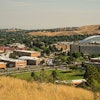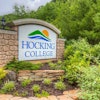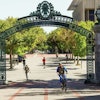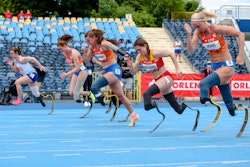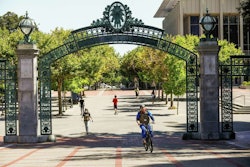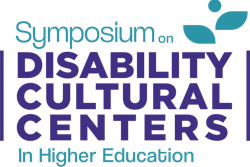 Phillip Berenbroick, counsel for government affairs at Public Knowledge, says that broadbrand service could level the playing field in regard to access to higher education.
Phillip Berenbroick, counsel for government affairs at Public Knowledge, says that broadbrand service could level the playing field in regard to access to higher education.WASHINGTON — A federal program that provides phone service to the poor could boost access to higher education if the program is upgraded to include broadband service, panelists said Wednesday.
“We’re talking about access to the same opportunities,” said Phillip Berenbroick, counsel for government affairs at Public Knowledge, an organization that advocates for an open Internet and access to affordable communications tools.
“If you’re a high school student and you can get broadband because you have a Lifeline subsidy, you’re talking about being able to learn more about the opportunities available to you,” Berenbroick said.
Berenbroick made his remarks at the New America Foundation here during a panel discussion titled “Bringing All Americans Online : How Updates to the FCC’s Lifeline Program Can Improve Opportunities for Underserved Communities.”
The Lifeline program is a Reagan-era program that provides phone service to low-income individuals, though as of late the program has been both dubbed and maligned as one that provides “Obamaphones.”
The FCC is expected to vote on March 31 on a plan to modernize the Lifeline program by allowing its users to apply their $9.25 per month support to stand-alone broadband service as well as bundled voice and data service packages.
Among other things, the plan calls for phasing in broadband service starting at 500 MB per month of 3G data, increasing to 2 GB per month by the end of 2018, according to an FCC draft proposal.
For perspective, with 500 MB a person could spend 21 hours surfing the web. With 2GB, a person could spend 89 hours surfing the web, according to an online mobile phone data calculator.
With college applications, federal financial aid forms increasingly being filled out online, not to mention online courses, one thought is that proving broadband access to users of Lifeline could help ease access to those things.
However, questions remain about the quality and speed of any broadband service that might be provided under Lifeline, as well as whether mobile devices can really perform all the academic and college-related tasks that supporters hope it can.
“Lifeline was designed as a subsidy for telecommunications service only — not the equipment used to connect to those services,” said Josh Stager, policy counsel at New America’s Open Technology Institute.
“Lifeline isn’t the silver bullet that can single-handedly close the digital divide,” Stager said. “It’s going to take a multi-pronged approach, of which Lifeline is just one strategy.”
Stager said the FCC is “working with the tools it has.”
“It’s taken a lot of work for the agency to get even this fairly modest modernization of Lifeline from a phone-only program in 1985 to one that is broadband-inclusive,” Stager said. “But many Americans clearly still need help affording the tablets and laptops that would get them online.”
The FCC proposal sets a budget of $2.25 billion and requires an analysis followed by action within six months once 90 percent of the budget is spent.
Panelists on Wednesday said one of the key challenges would be to get the word out about the program.
The FCC proposal calls for a third-party verifier to determine if people are eligible. It calls for refining the list of federal public benefits programs that can be used to identify people who are eligible for the program, such as SNAP, SSI and Medicaid. Speakers suggested that administrators of those programs could coordinate efforts to get the word out about Lifeline if the FCC moves to allow users to apply their subsidies to broadband service.
“The FCC will make Internet capability available to many people for the first time and disseminating that fact I hope is going to be the head of the arrow that we’re going to use,” said Andy Schwartzman, Benton Senior Counselor at the Institute for Public Representation at Georgetown Law.
Lamenting the fact that historically only about a third of those eligible for Lifeline have used the service, Schwartzman said, “I hope the outreach will be more successful than it has been in the past.”
Jamaal Abdul-Alim can be reached at [email protected]. Or you can follow him on Twitter @dcwriter360.

